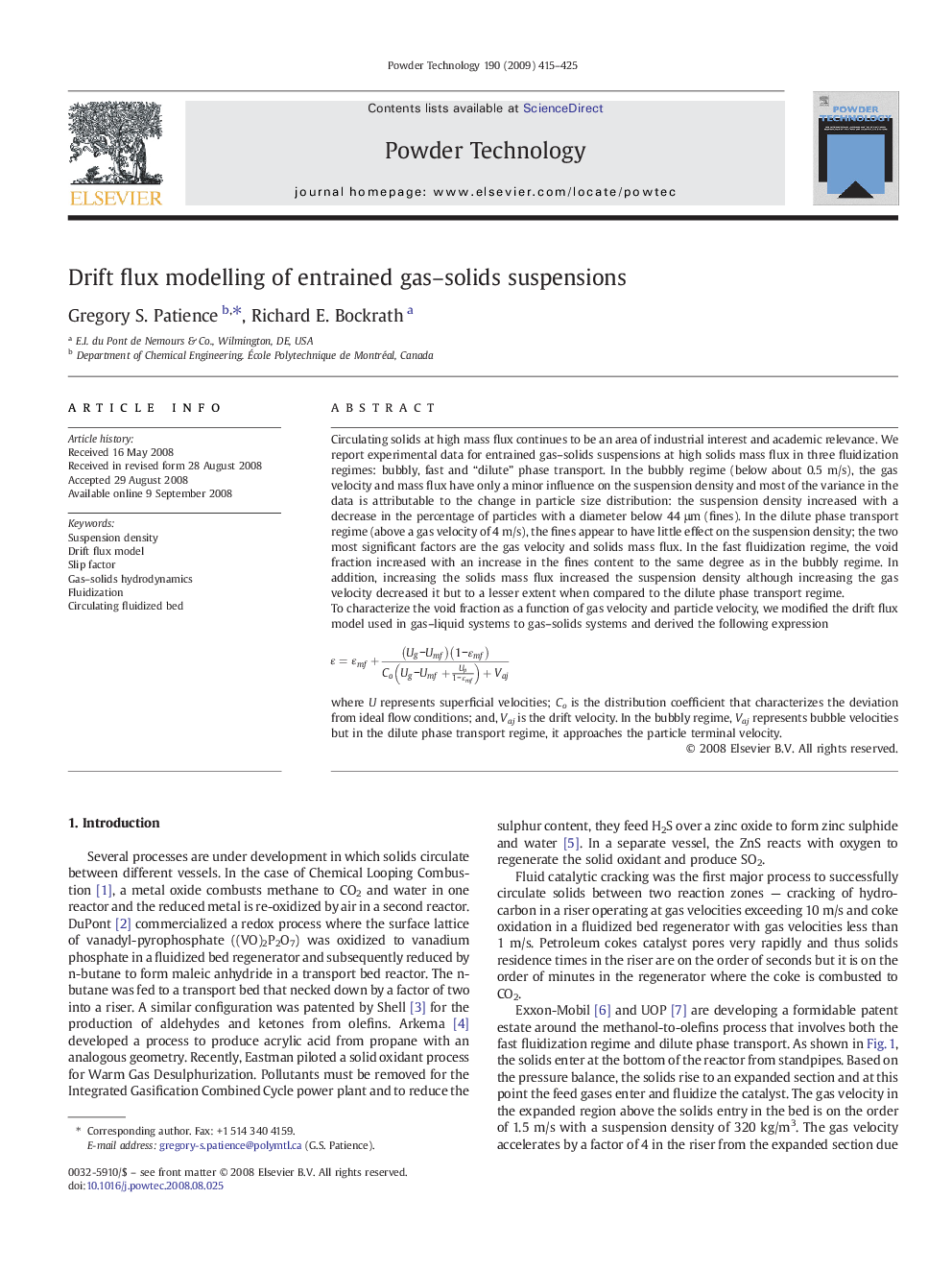| Article ID | Journal | Published Year | Pages | File Type |
|---|---|---|---|---|
| 238144 | Powder Technology | 2009 | 11 Pages |
Circulating solids at high mass flux continues to be an area of industrial interest and academic relevance. We report experimental data for entrained gas–solids suspensions at high solids mass flux in three fluidization regimes: bubbly, fast and “dilute” phase transport. In the bubbly regime (below about 0.5 m/s), the gas velocity and mass flux have only a minor influence on the suspension density and most of the variance in the data is attributable to the change in particle size distribution: the suspension density increased with a decrease in the percentage of particles with a diameter below 44 μm (fines). In the dilute phase transport regime (above a gas velocity of 4 m/s), the fines appear to have little effect on the suspension density; the two most significant factors are the gas velocity and solids mass flux. In the fast fluidization regime, the void fraction increased with an increase in the fines content to the same degree as in the bubbly regime. In addition, increasing the solids mass flux increased the suspension density although increasing the gas velocity decreased it but to a lesser extent when compared to the dilute phase transport regime.To characterize the void fraction as a function of gas velocity and particle velocity, we modified the drift flux model used in gas–liquid systems to gas–solids systems and derived the following expressionɛ=ɛmf+(Ug−Umf)(1−ɛmf)Co(Ug−Umf+Up1−ɛmf)+Vajwhere U represents superficial velocities; Co is the distribution coefficient that characterizes the deviation from ideal flow conditions; and, Vaj is the drift velocity. In the bubbly regime, Vaj represents bubble velocities but in the dilute phase transport regime, it approaches the particle terminal velocity.
Graphical abstractCirculating solids at high mass flux continues to be an area of industrial interest and academic relevance. We report the data in three fluidization regimes at gas velocities between 0.3 and 10 m/s and solids mass flux between 20 and 1000 kg/m2 s. To characterize the data, we adopted the drift flux model whose parameters characterize the radial profiles of void fraction and axial velocity.Figure optionsDownload full-size imageDownload as PowerPoint slide
